Centenary Radio: WLW – The “Big One” in US Broadcasting
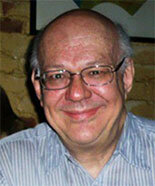
[March 2022] As we continue our look at the pioneering stations from 100 years ago, WLW looms large on among them. In the late 1920s and early 1930s the race to 50 kilowatts – and higher – filled many transmitter buildings. But WLW got bigger than any other station. A major reason was the relentless work of its founder. Here is some of the history leading to what truly was the first “Big One” in the world: WLW.
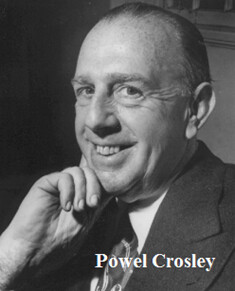 Powel Crosley, Jr. was a manufacturer who rarely did things on a small scale. He was a product of the early 1900’s, a time when assembly line techniques were used to mass produce products, changed the lives of many people.
Powel Crosley, Jr. was a manufacturer who rarely did things on a small scale. He was a product of the early 1900’s, a time when assembly line techniques were used to mass produce products, changed the lives of many people.
When mixed with the new technology of radio and Crosley’s brilliance as a marketer, it became a real game changer.
That he did this with the technology of the 1920s and 1930s only makes it more impressive.
SMART MARKETING
At first, Crosley considered radio nothing more than a toy, his personal real interest was automotive. But one day he was shopping with his son and was stunned to find the minimum cost of a radio receiver in those days was $130 – several month’s wages for the average worker.
As Crosley was a practical man, he spent 25 cents for the book “The ABCs of Radio,” then purchased parts and built his own receiver. Realizing many others would be interested in having a receiver, but as early receivers were quite costly, most probably could neither afford nor build their own. Therefore, he decided to design and build cheaper receivers the masses could afford.
Crosley started making radio receivers in 1921 with the Harko Junior. Of course, in those days, selling a receiver required something we today take for granted: programming. So, in July 1921, Crosley received the amateur license 8XAA and brought the Harkos to life three nights a week from his home studio.
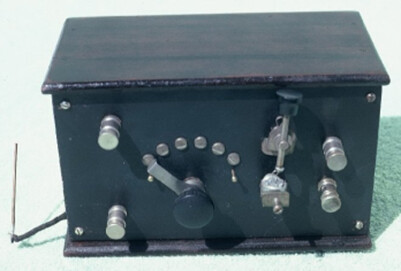
The sales of the Harko in the 1921 Christmas season were so successful that Crosley stopped building anything else but radio receivers – 500 to a thousand a day using an assembly line. 1922 brought the Harko Senior, Tuno, Condenso, Detecto, De-Amplo, and Duo-Amplo models. All were under $70, with many under $20. Many began to incorporate the Armstrong regenerative circuitry.
PROGRAM PROVIDER
In 1921, radio was new – and the number of stations was small.
Realizing how popular his receivers were, Crosley applied to the government for his own commercial station, and was granted a license for WLW on March 2, 1922 – 20 Watts, but a faint whisper of what was to come. Employee and University of Cincinnati electrical engineer student Dorman Israel designed and built the 20 Watt transmitter – as well as the 50 Watt unit to follow, which is on display at the VOA Museum (see below). As with all of the “commercial” stations of the day, at first it was assigned to share 833 kHz. The next year, it moved to 710 kHz.
Proper arrangements were made and a Grand Opening broadcast was scheduled and promoted for March 23rd at 7:15 PM. Crosley made sure there was an advertisement for receivers right there on the front page.
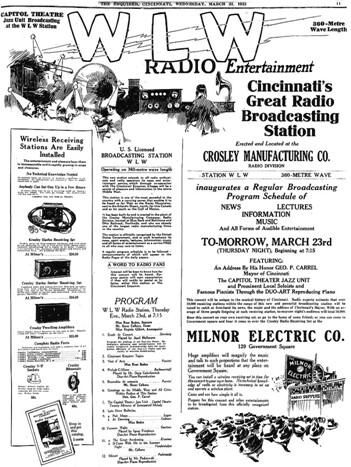
Of course, the WLW of the early 1920s was nothing like what it would become. A little, curtained studio, made quite warm by the operation of the transmitter, would contain the whole operation. The microphone was essentially a huge, eight-foot horn-shaped affair with an opening three-feet across. The announcer would literally stick his head halfway down the microphone and speak up to be heard. Something else could be heard: needing to keep the small windows open to reduce the heat, the local B & O Railroad engineers would contribute their bells and whistles to the programming!
Records would be played by putting the output horn of the phonograph next to the microphone’s input horn. Crosley liked to like to play “Song of India – and did so over and over, announcing the music was coming from “WLW – the broadcasting station for the Queen City of the West.” (If you hear a station today repeating one record as a stunt to get attention, just remember that the concept is 100 years old!)
Whatever it was, the programming was well-received by listeners. People wrote. People called on the phone. Some were as far as 70 miles away.
MORE POWER
However, what made Powel Crosley and his station special was his combination of enthusiasm for the medium and his business sense as a manufacturer. On the other hand, WLW did suffer from what he felt was a lack of reach.
Almost immediately, Crosley asked the government for more power, and was granted 50, then 100, Watts. Unlike today’s world filled with RF noise, a hundred Watts would reach out quite well. A November 1922 contest garnered letters from 42 states indicating there was a large potential audience – as well as customers for Crosley radio receivers.
MORE AFFORDABLE RADIOS
Yet, Crosley was far from done.
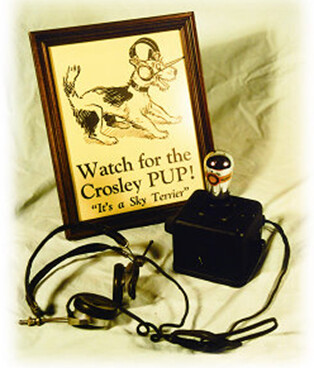 His original thinking that there would be profit in making a receiver that could be afforded by the masses proved to be correct.
His original thinking that there would be profit in making a receiver that could be afforded by the masses proved to be correct.
Crosley continued to design cheaper radios, eventually making the Harko to sell for $9.
Another low-priced effort: the Crosley PUP. Crosley said “A home is not a home without a radio.”
The key to making this plan work seemed to be in getting more and more transmitted power broadcast to the radios.
This need for power led Crosley and WLW to seek an increase to 500 Watts. His engineer designed the transmitter, powered by a streetcar motor and four DC generators, as well as an unorthodox antenna which had a multiple-tuned 12-wire, 140-foot flat-top, supported by a 100-foot guyed mast at each end. Operation increased to 25 hours a week.
Then an effort to reduce competition brought unexpected benefits.
A NEW ANTENNA AND TRANSMITTER
In January 1923, Crosley purchased the Precision Instrument Company, and its station – WMH.
Precision had a license to make Armstrong-based regenerative receivers. But, the purchase also included a spare antenna. And although the WMH antenna used an empty wine bottle for an insulator, it was a vertical antenna. This helped WLW provide better non-directional coverage.
The homebrew transmitter proved to be difficult to operate, so a Western Electric 1A Heising low-level modulated 500 Watt model was purchased. Operation was better, audio was cleaner. Crosley was energized – and promoted the new transmitter. News reports stated “The new transmitter, which has all of the new refinements and improvements in radio broadcasting, … will give WLW greater coverage and more power than any station in the United States.”
To reach out even further, WLW sought and received permission for a move to 710 kHz, then in 1924, it was granted a power output level of 1,000 Watts. The following year, it was the first US station to use a Western Electric 5C, a 5000 Watt transmitter. Another Crosley motto: “Doing it first, that’s Crosley”
Next, a transmitter facility was planned to move 25 miles out from the studio into a rural area of suburban Mason, OH. The transmitter site would have a transmitter building, a residence, and soon would have a towering Blaw-Knox diamond-shaped antenna that was visible for miles around.
THE NATION’S STATION
In 1927 WLW made its final move on the dial, to 700 kHz. And, then, in 1928 WLW was the first to raise their power to 50,000 Watts with their new Western Electric 7A.
Located within a hundred miles of the center of the US, with 50 kW the station was heard almost everywhere – and became “The Nation’s Station.”
But Powel Crosley wanted yet more.
POWERING THROUGH THE DEPRESSION
Although there was a certain difficulty – the 1929 Depression – Crosley was not finished.
A brand new studio complex was built, with five studios, one as big as 63 x 39 x 21 feet were built and inaugurated in 1930. WLW became part of the NBC Network, taking and feeding programs around the nation. Construction at Mason continued. New automobile radios were introduced.
And then, after a decade, Crosley’s quest for selling more radios at lower prices led to an achievement that has never yet been duplicated in the US: the operation of a 500 kW transmitter as W8XO starting on February 9, 1934. In April, daytime use of the 500 kW was authorized.
The coverage from this station was enormous. Operating at 500 kilowatts, the 390-Ohm base impedance ran some 35 Amperes of RF. The unmodulated signal produced a RF field intensity of at least 6 Volts per meter at a distance of one mile from the tower. At night, the signal regularly went from Maine to Southern California and Mexico.
Requests came from daytime listeners in Hawaii and from Buckingham Palace.
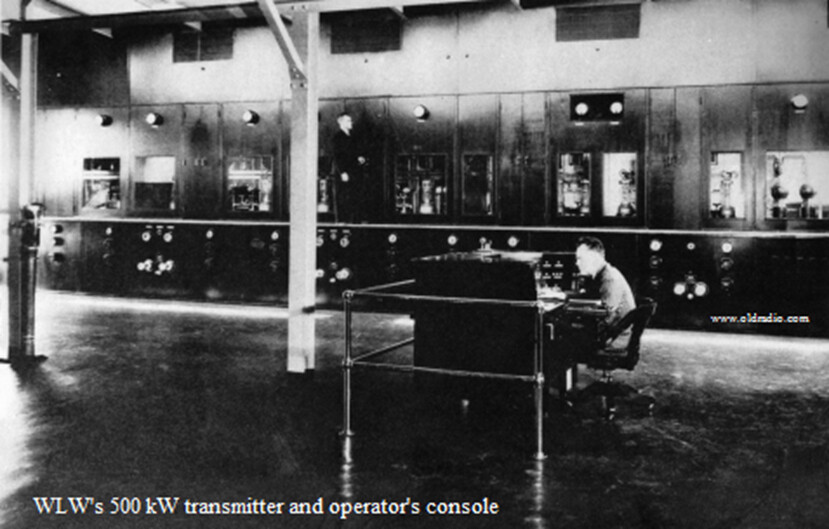
The transmitter was a combined effort, led by RCA, and which included design by RCA. Engineering Supervisor Joseph Chambers oversaw the project for WLW.
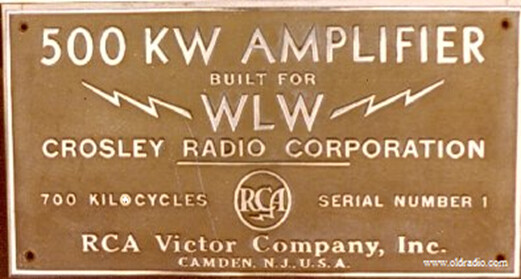 General Electric built the radio frequency amplifiers, DC power supplies, high voltage rectifiers, harmonic filters, RF transmission line, antenna tuning equipment, control systems and control console.
General Electric built the radio frequency amplifiers, DC power supplies, high voltage rectifiers, harmonic filters, RF transmission line, antenna tuning equipment, control systems and control console.
Westinghouse did the audio frequency amplifiers, modulators, modulation transformers, filament supplies, isolation switching, water pumps, motor generators for control circuits and bias, heat exchangers and the entire cooling system.
It was, very obviously, Serial Number 1.
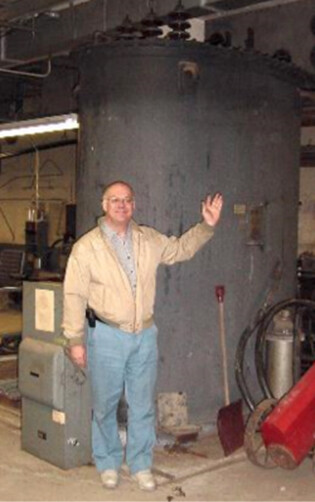
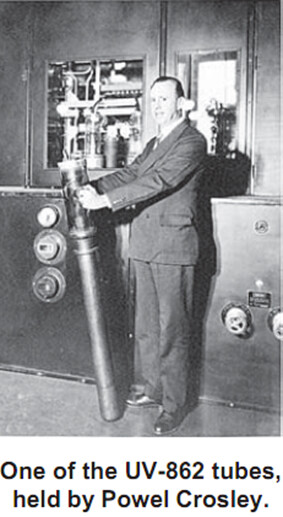
And it was huge. The statistics are almost impossible to believe in this day of transistor-ization. The transmitter was fifteen feet high and sixty feet wide. The building had to be expanded.
Each modulation transformer (left) weighed 35,700 pounds, including 725 gallons of oil, and was about 10 feet tall.
The three parallel power amplifiers used 12 five-foot tall UV-862 PA tubes. A three-phase sub-station was constructed to provide the two 33.5 kV power lines came to the transmitter building. 2300 Volts of AC entered the building. The 500,000 Watt Power Amplifier alone required 1600 kilowatts plus more for the 50 kW driver.
Just getting the RF current to the tower required a feedline almost 10 inches in diameter.
A 70-foot-square pond held the water used to cool the transmitter, which needed something like 10,000 gallons of cool water a minute.
And the tower itself was a wonder of the times, an 831-foot Blaw-Knox construct in a diamond-shaped form, 35 feet across at 350-foot level. Visible for miles, the tower came to well represent the enhanced reach of the station.
All together, the installation cost $500,000 in 1930s dollars (about $10 million today)!
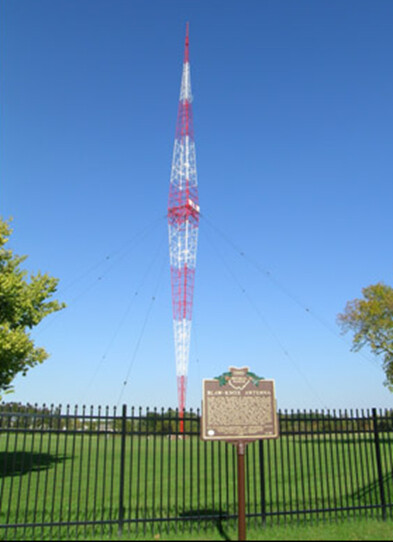
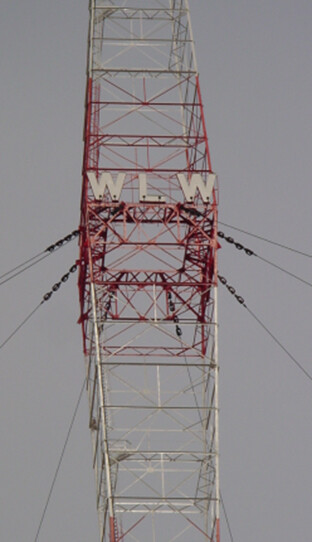
It was said that when WLW turned on the big rig the street lights in Mason, OH dimmed. In some homes, lights could not be turned off. And when the transmitter “coughed,” lights blinked all over town.
Operation required as many as 17 operators at a time – and a full engineering staff of 63 – to run it (not to mention an air staff of 190 full and part time performers).
Its reach was awesome. It was truly “The Nation’s Station.” There never has been another like it in the US.
TOURS
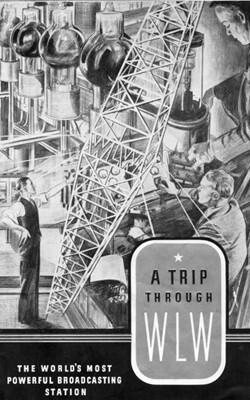 The reach and popularity of WLW was proven by the demand for tours of the facility.
The reach and popularity of WLW was proven by the demand for tours of the facility.
Tours were available “Daily from Noon to 8 PM.” Visitors were provided with a 20-odd page booklet as a souvenir of their tour.
Inside were descriptions of the “Big One” showing some parts that could not be seen under power, as well as the history of WLW, features of its programming and its reach.
WLW no longer runs regular tours of the site, as they did in the 1930s and 1940s, and access depends upon the limited time and availability of the engineer. Yes, engineer. The staff of 63 now is one person. Of course, with the new solid state transmitters, operation is much simpler and more reliable – and a modern remote control system allows the site to be unmanned most of the time.
However, just down the road, there is what was used to be a sort of “sister site” where the VOA at Bethany Relay OH, transmitters lived
Today, the National Voice of America Museum of Broadcasting, featuring the Jack Gray History of Wireless Museum offers visitors a chance to see a large collection of everything that went into the WLW of old, from microphones to many of the Crosley receivers, as well as some of the large VOA transmitters that beamed programming around the world.
COVERING THE NATION LIKE A BLANKET
Those 500 kilowatts had an awesome reach.
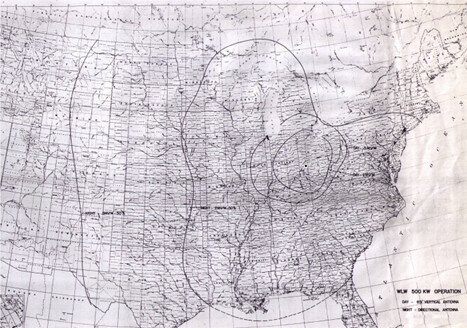
The signal covered the majority of the US, even when the FCC demanded WLW pull in their night signal from the Northeast to protect a Canadian station, CFRB in Toronto.
It was still strong when the top 123 feet of the tower were removed to reduce “selective fading” at about 100 miles from the station.
But, the huge coverage contour was not to last.
Bowing to pressure from other stations that did not like the competition from super-powered stations, and from Congress, the FCC declined to renew the 500 kW permit on March 1, 1939. WLW went back to “only” 50 kW.
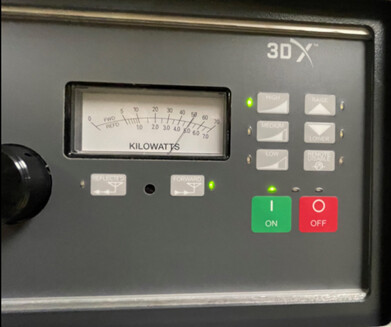
In 1941, WLW again applied for 500 kW/50 kW DA-N, but was rebuffed by the FCC. Similarly in 1962 an application for 750 kW was denied.
Today, the WLW site is still home to a working radio station, although the 500 kW is but a memory. Those who are new to the industry may have only seen 50 kW transmitters that rival the size of a large refrigerator. If they are fortunate to be able to visit the WLW site in Mason, Ohio, invariably they are impressed with the site and the remains of the 500 kW transmitter, even though it has not been run in almost 70 years. Just imagining it in operation is a “trip.”
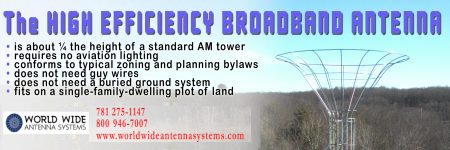
LIFE AFTER 500 KW
After you have hiked to the top of the mountain, walking in the flatlands is never the same.
Sadly, after the loss of the permit for 500 kW, Crosley’s interest in broadcasting waned, and he turned to his other manufacturing interests. In 1945, he sold WLW to the Aviation Corporation (AVCO).
A slight diversion: even without radio, Crosley was busy – it was not just receivers he sold.
For example, among the many products produced, the Crosley refrigerator line did very well, based on the reputation of his radio receivers – models like the Shelvador, the first to have shelves in the door. The Icyball was introduced, requiring no electricity nor gas to operate. It was reckoned that there were over 10 million potential users for the Icyball models in the US, with more overseas.
Other areas Crosley pursued included automobiles, airplanes, and airplane radios. Yes, Crosley scored firsts for broadcasts from airplanes and balloons.
THE CATHENODE
Nevertheless, even after being sold to AVCO, WLW also kept innovating.
In the 1940s and 1950s, it produced a 50 kW transmitter designed and built by employees, led by R. J. “Jim” Rockwell. The Cathenode transmitter was ahead of its time, with an emphasis on high fidelity and low distortion – it was said to be designed to transmit 20 Hz to 50 kHz with less than 1% distortion.
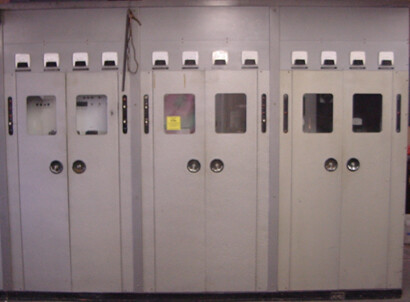
The one unit built went on the air in January 1959, and achieved 17 Hz to 21.5 kHz with 0.3% distortion.
It was not designed for efficiency, so it ran a large power bill and required constant attention to keep it running properly.
For those and other reasons, the design did not catch on in the industry. The Cathenode still sits in place at WLW, used as a backup until 1975, but only with a redesigned conventional plate modulator section.
RECENT SITE CHANGES
After filtering through several hands, WLW was purchased by Jacor (later Clear Channel, now iHeart Media) in 1986.
Over the years, the transmitter room filled up with a Continental 317C-1, a Harris DX50, and a Harris 3DX50. All the while, as it stood there, silently, the 500 kW transmitter was never to be used again.
As happened with many stations over the past 20 to 30 years, WLW’s owners decided to sell real estate property to benefit from the increased values as cities grew outward.
The WLW property and tower were sold to Vertical Bridge. Construction has started on Tower Park, with a bank, daycare site, gas station, and other businesses planned. The cooling pond has been dismantled.
A BLAST FROM THE PAST
No matter, on the 100th anniversary of WLW, The Big One is still a fixture in Cincinnati, and the big diamond tower is still out there in Mason.
As a way of celebrating the 100th anniversary of the first broadcast at WLW, Chief Engineer Paul Jellison has been preparing the Continental 317C-1 to possibly return to the air just as he did at the turn of the century to restore voice to the long silent 107A.
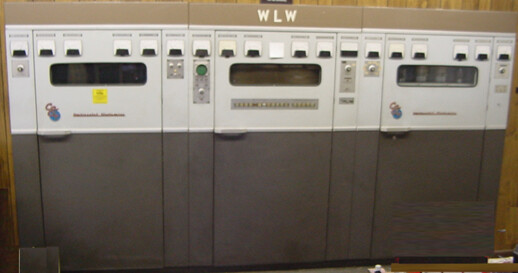
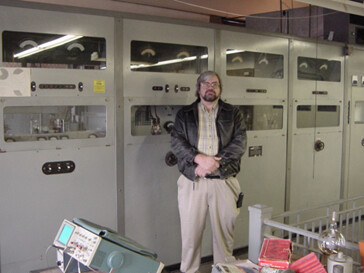
Yes, Crosley’s dream can still be seen and appreciated.
– – –
A celebratory 100 year video for WLW by Dave Snyder is here.
